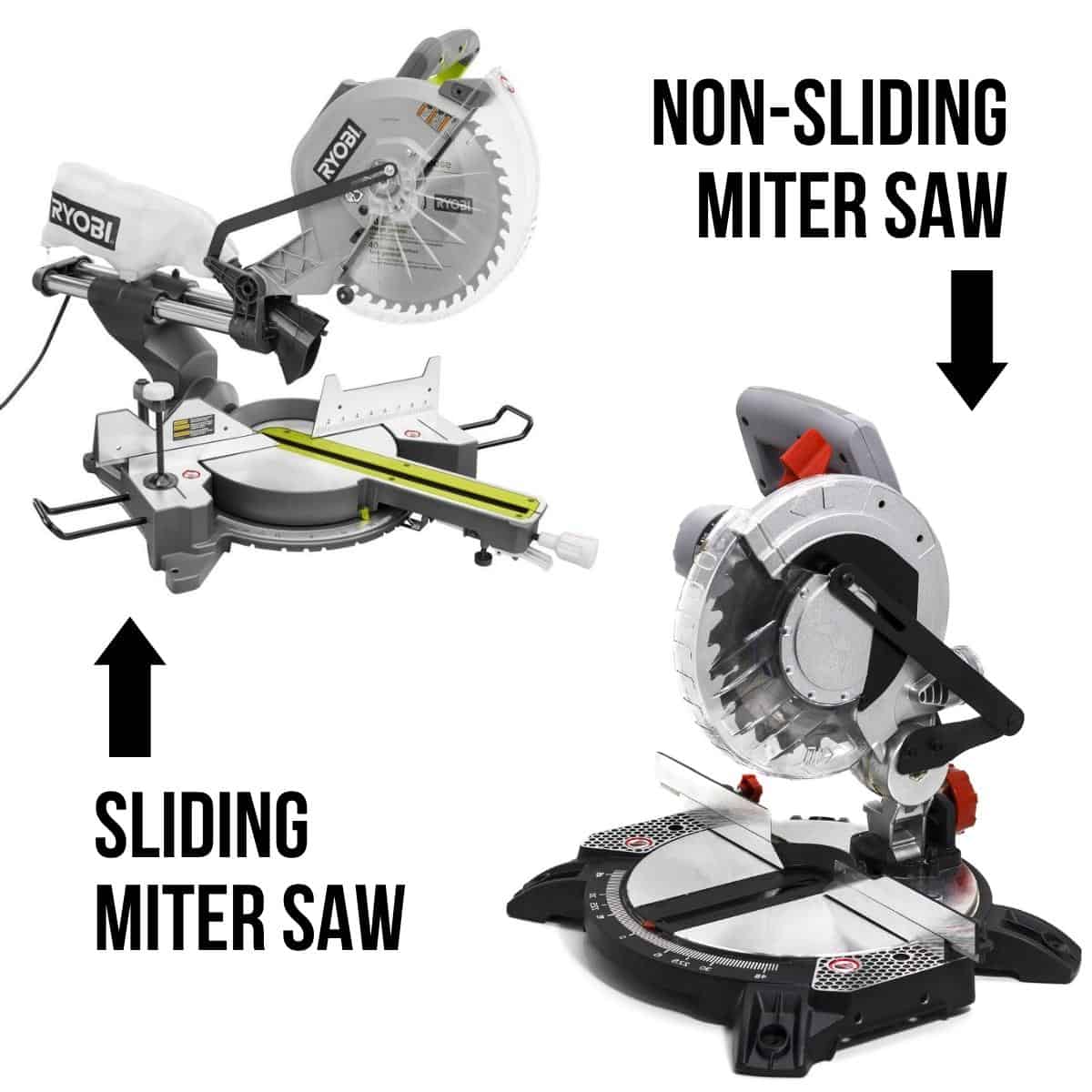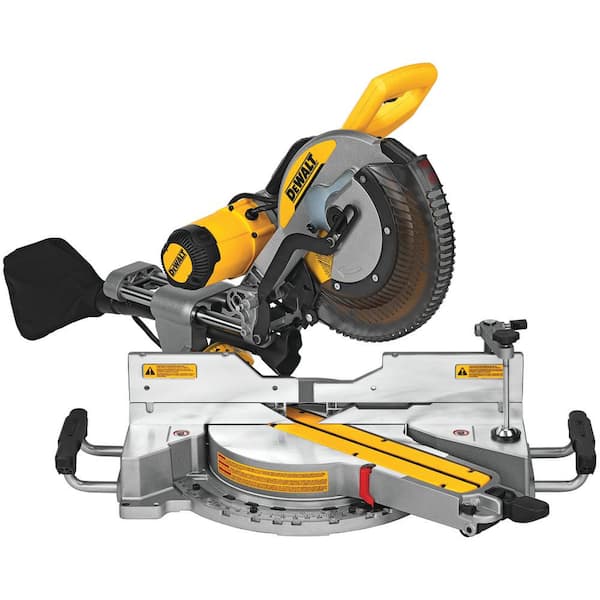Do you ever find yourself needing to make precise cuts in wood for your DIY projects? Well, you might be wondering, “Do I need a sliding miter saw?” Let’s dive in and explore why a sliding miter saw could be a valuable addition to your toolkit.
Picture this: you’re working on a woodworking project, and you need to make angled cuts or cuts across wide boards. A regular miter saw just won’t cut it (pun intended!). That’s where a sliding miter saw comes in handy. With its sliding feature, you can easily move the blade back and forth, allowing you to make wider and more versatile cuts.
Not only does a sliding miter saw offer flexibility, but it also provides precision. Whether you’re creating crown molding, trimming baseboards, or constructing furniture, a sliding miter saw ensures accurate and repeatable cuts every time. So, even if you’re a beginner DIY enthusiast, this tool can help you achieve professional-looking results without breaking a sweat.
So, the question remains, do you need a sliding miter saw? If you’re serious about woodworking, tackling large projects, or simply want to elevate your craftsmanship, investing in a sliding miter saw can be a game-changer. It offers the versatility, precision, and ease of use that can take your woodworking endeavors to the next level. So, grab your safety goggles and get ready to make some impressive cuts with a sliding miter saw!

Do I Need a Sliding Miter Saw? Everything You Need to Know
A sliding miter saw is a versatile tool that can make a woodworker’s job much easier. Whether you are a professional carpenter or a DIY enthusiast, a sliding miter saw can help you achieve clean and precise cuts in various materials. But do you really need one? In this article, we will explore the benefits and features of a sliding miter saw to help you make an informed decision.
The Benefits of a Sliding Miter Saw
A sliding miter saw offers several advantages that can greatly enhance your woodworking projects. Firstly, its sliding feature allows you to cut through wider pieces of wood. This means you can tackle larger projects with ease and precision. Additionally, the miter angles and bevel capabilities of a sliding miter saw allow for more complex cuts, such as angled and compound cuts.
Furthermore, a sliding miter saw is incredibly efficient and time-saving. Its sliding mechanism enables you to make repetitive cuts without the need to reposition the workpiece. This can significantly speed up your work and improve overall productivity. The accuracy of a sliding miter saw is also worth mentioning. Its built-in laser guide or LED light ensures that you make precise cuts every time, resulting in professional-looking finished products.
Accurate and Precise Cuts
One of the main reasons why woodworkers choose a sliding miter saw is its ability to provide accurate and precise cuts. The sliding feature allows you to adjust the position of the blade while keeping the workpiece stationary, which minimizes the risk of errors caused by moving the workpiece. Additionally, the miter angles and bevel capabilities give you the flexibility to make angled cuts and compound cuts with ease and accuracy.
The precision of a sliding miter saw is further enhanced by its built-in laser guide or LED light. This feature casts a shadow or illuminates a line on the workpiece, indicating exactly where the blade will make the cut. This ensures that you can align your cut perfectly and achieve the desired result consistently.
Furthermore, many sliding miter saws come with a miter index that allows you to lock the blade at common miter angles, such as 45 degrees and 90 degrees. This eliminates the need to measure and adjust the angle manually, saving you time and effort.
Versatility and Flexibility
A sliding miter saw offers a wide range of cutting capabilities, making it a versatile tool for various woodworking projects. The sliding feature allows you to cut through wider pieces of wood, enabling you to tackle larger projects such as building furniture, framing walls, or constructing decks.
In addition to straight cuts, a sliding miter saw can make angled cuts and compound cuts. This is particularly useful for projects that require precise angles, such as crown molding, picture frames, or door frames. The bevel capability of a sliding miter saw also allows you to make beveled cuts, which are often required in furniture making or trim work.
Moreover, many sliding miter saws come with adjustable stops and detents for common angles, such as 45 degrees or 90 degrees. This ensures consistent and accurate cuts, especially when you need to make repetitive cuts for multiple pieces.
Efficiency and Time-saving
Another major advantage of a sliding miter saw is its efficiency and time-saving features. The sliding mechanism allows you to make cuts without having to move the workpiece, which can save you a significant amount of time and effort, especially when making repetitive cuts or working with long pieces of wood.
Furthermore, a sliding miter saw can be equipped with a dust collection system that helps keep your work area clean and reduces the amount of sawdust produced. This not only improves the visibility of your work but also contributes to a healthier and safer working environment.
Moreover, the accuracy and precision of a sliding miter saw also contribute to its time-saving benefits. By ensuring precise cuts, you can avoid the need for rework, saving valuable time and materials.
Maintenance and Safety Tips
While a sliding miter saw offers numerous benefits, it’s important to take proper care of the tool to ensure longevity and safe operation. Here are some maintenance and safety tips to keep in mind:
- Regularly clean the saw and remove any debris or sawdust that may accumulate on the blade, table, or sliding mechanism.
- Keep the blade sharp by regularly sharpening or replacing it when necessary. A dull blade can cause kickback or produce poor cuts.
- Ensure the saw is securely mounted or attached to a stable surface before use. This prevents any unwanted movement or accidents during operation.
- Wear safety goggles, ear protection, and a dust mask to protect yourself from flying debris, loud noise, and fine dust particles.
- Always use the appropriate blade for the material you are cutting. Using the wrong blade can result in poor cuts or damage to the saw.
Conclusion
A sliding miter saw can be a valuable addition to your woodworking arsenal. Its ability to provide accurate and precise cuts, versatility in handling various projects, and time-saving features make it a highly desirable tool for both professionals and DIY enthusiasts. By considering your specific woodworking needs and weighing the benefits mentioned in this article, you can determine whether a sliding miter saw is a necessary tool for your projects. Remember to always prioritize safety and proper maintenance to ensure optimal performance and longevity of your sliding miter saw.
Key Takeaways: Do I Need a Sliding Miter Saw?
- A sliding miter saw provides added versatility compared to a regular miter saw.
- It allows for making wider crosscuts, thanks to its sliding feature.
- If you frequently work with large pieces of lumber or need to make angled cuts, a sliding miter saw can be a valuable tool to have.
- For DIY enthusiasts or hobbyists who work on home improvement projects, a sliding miter saw can help achieve more precise and professional results.
- However, if you only require basic straight cuts, a regular miter saw may suffice.
Frequently Asked Questions
When it comes to woodworking, having the right tools can make all the difference. One tool that often comes up in discussions is the sliding miter saw. If you’re wondering whether you need one or not, we’ve got you covered. Check out these frequently asked questions to help you make an informed decision.
1. What are the advantages of using a sliding miter saw?
A sliding miter saw offers several advantages that make it a valuable tool in woodworking. Firstly, its sliding feature allows for increased cutting capacity and versatility, enabling you to tackle larger workpieces. Secondly, the miter function allows you to make angled cuts with precision and ease, making it ideal for tasks like crown molding or picture framing. Lastly, the saw’s ability to make compound cuts, combining both miter and bevel angles, adds even more versatility to your projects.
Overall, a sliding miter saw offers increased cutting capacity, versatility, and precision, making it a valuable tool for both professional woodworkers and DIY enthusiasts.
2. Can I achieve the same results without a sliding miter saw?
While it is possible to achieve similar results using other tools, a sliding miter saw offers unique features that make certain tasks more efficient and accurate. The sliding feature, for example, allows you to easily cut through wider workpieces that would be challenging with a regular miter saw or circular saw.
Using other tools to replicate the functions of a sliding miter saw might require additional equipment or more time-consuming methods, which can impact the quality and efficiency of your work. If you frequently work with larger materials or require precise angled cuts, a sliding miter saw can greatly enhance your woodworking capabilities.
3. Is a sliding miter saw suitable for beginners?
Yes, a sliding miter saw can be suitable for beginners, especially for those who are serious about woodworking or have larger projects in mind. The sliding feature and preset angles make it easier to achieve accurate cuts, even for those who are just starting out.
However, it’s important to consider your specific woodworking needs before investing in a sliding miter saw. If you primarily work on small projects that don’t require angled cuts or larger workpieces, a standard miter saw or a different tool may be more appropriate for your skill level and project requirements.
4. Can a sliding miter saw handle all types of cuts?
While a sliding miter saw is versatile, it may not be suitable for every type of cut. It excels at making crosscuts, miter cuts, and bevel cuts. However, for intricate or specialized cuts, such as dado cuts or joinery, you may need additional tools or techniques.
That being said, for a wide range of woodworking projects, a sliding miter saw can handle the majority of cuts you’ll need. Its versatility and ease of use make it a go-to tool for many woodworkers.
5. What should I consider when buying a sliding miter saw?
When buying a sliding miter saw, there are several factors to consider. Firstly, think about the size of your projects and the cutting capacity you’ll need. Look for a saw with sufficient crosscut capacity and a sliding mechanism that can accommodate the materials you typically work with.
You should also consider the saw’s power, accuracy, and ease of use. Look for features like a powerful motor, a solid and adjustable fence, and precise miter and bevel scales. Additionally, think about portability, safety features, and your budget. By considering these factors, you can choose a sliding miter saw that best suits your woodworking needs.

Which Miter Saw is better Sliding vs Fixed
Summary
So, do you really need a sliding miter saw? It depends on your woodworking needs. They offer versatility, precision, and the ability to make angled cuts. However, if you’re just doing simple DIY projects, a regular miter saw might be enough. Consider your budget and the type of work you’ll be doing before making a decision.
Remember, safety should always be a priority when using any power tool. Make sure to read the user manual, wear appropriate protective gear, and take your time to learn how to use the tool properly. With the right precautions in place, a sliding miter saw can be a valuable addition to your workshop.
